The biochemistry of acetaminophen hepatotoxicity and rescue: a mathematical model
- PMID: 23249634
- PMCID: PMC3576299
- DOI: 10.1186/1742-4682-9-55
The biochemistry of acetaminophen hepatotoxicity and rescue: a mathematical model
Abstract
Background: Acetaminophen (N-acetyl-para-aminophenol) is the most widely used over-the-counter or prescription painkiller in the world. Acetaminophen is metabolized in the liver where a toxic byproduct is produced that can be removed by conjugation with glutathione. Acetaminophen overdoses, either accidental or intentional, are the leading cause of acute liver failure in the United States, accounting for 56,000 emergency room visits per year. The standard treatment for overdose is N-acetyl-cysteine (NAC), which is given to stimulate the production of glutathione.
Methods: We have created a mathematical model for acetaminophen transport and metabolism including the following compartments: gut, plasma, liver, tissue, urine. In the liver compartment the metabolism of acetaminophen includes sulfation, glucoronidation, conjugation with glutathione, production of the toxic metabolite, and liver damage, taking biochemical parameters from the literature whenever possible. This model is then connected to a previously constructed model of glutathione metabolism.
Results: We show that our model accurately reproduces published clinical and experimental data on the dose-dependent time course of acetaminophen in the plasma, the accumulation of acetaminophen and its metabolites in the urine, and the depletion of glutathione caused by conjugation with the toxic product. We use the model to study the extent of liver damage caused by overdoses or by chronic use of therapeutic doses, and the effects of polymorphisms in glucoronidation enzymes. We use the model to study the depletion of glutathione and the effect of the size and timing of N-acetyl-cysteine doses given as an antidote. Our model accurately predicts patient death or recovery depending on size of APAP overdose and time of treatment.
Conclusions: The mathematical model provides a new tool for studying the effects of various doses of acetaminophen on the liver metabolism of acetaminophen and glutathione. It can be used to study how the metabolism of acetaminophen depends on the expression level of liver enzymes. Finally, it can be used to predict patient metabolic and physiological responses to APAP doses and different NAC dosing strategies.
Figures


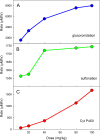

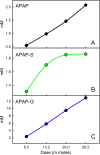

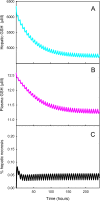
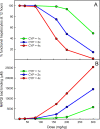


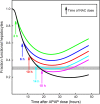
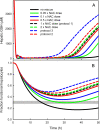

Similar articles
-
N-acetylcysteine amide, a promising antidote for acetaminophen toxicity.Toxicol Lett. 2016 Jan 22;241:133-42. doi: 10.1016/j.toxlet.2015.11.008. Epub 2015 Nov 19. Toxicol Lett. 2016. PMID: 26602168
-
Mathematical modelling of chronic acetaminophen metabolism and liver injury.Math Med Biol. 2014 Sep;31(3):302-17. doi: 10.1093/imammb/dqt010. Epub 2013 Jun 20. Math Med Biol. 2014. PMID: 23788256
-
Protection afforded by pre- or post-treatment with 4-phenylbutyrate against liver injury induced by acetaminophen overdose in mice.Pharmacol Res. 2014 Sep;87:26-41. doi: 10.1016/j.phrs.2014.06.003. Epub 2014 Jun 18. Pharmacol Res. 2014. PMID: 24951965
-
Metabolic phenotyping applied to pre-clinical and clinical studies of acetaminophen metabolism and hepatotoxicity.Drug Metab Rev. 2015 Feb;47(1):29-44. doi: 10.3109/03602532.2014.982865. Epub 2014 Dec 23. Drug Metab Rev. 2015. PMID: 25533740 Review.
-
Therapeutic Potential of Plants and Plant Derived Phytochemicals against Acetaminophen-Induced Liver Injury.Int J Mol Sci. 2018 Nov 28;19(12):3776. doi: 10.3390/ijms19123776. Int J Mol Sci. 2018. PMID: 30486484 Free PMC article. Review.
Cited by
-
The Role of Glutathione Metabolism in Chronic Illness Development and Its Potential Use as a Novel Therapeutic Target.Cureus. 2022 Sep 28;14(9):e29696. doi: 10.7759/cureus.29696. eCollection 2022 Sep. Cureus. 2022. PMID: 36321012 Free PMC article. Review.
-
Antioxidative stress effects of vitamins C, E, and B12, and their combination can protect the liver against acetaminophen-induced hepatotoxicity in rats.Drug Des Devel Ther. 2018 Oct 18;12:3525-3533. doi: 10.2147/DDDT.S172487. eCollection 2018. Drug Des Devel Ther. 2018. PMID: 30425454 Free PMC article.
-
Asymmetric author-topic model for knowledge discovering of big data in toxicogenomics.Front Pharmacol. 2015 Apr 20;6:81. doi: 10.3389/fphar.2015.00081. eCollection 2015. Front Pharmacol. 2015. PMID: 25941488 Free PMC article.
-
Fructose as a novel nutraceutical for acetaminophen (APAP)-induced hepatotoxicity.Metab Target Organ Damage. 2023;3(4):20. doi: 10.20517/mtod.2023.28. Epub 2023 Oct 29. Metab Target Organ Damage. 2023. PMID: 39193224 Free PMC article.
-
Oxidative Stress, Genomic Integrity, and Liver Diseases.Molecules. 2022 May 15;27(10):3159. doi: 10.3390/molecules27103159. Molecules. 2022. PMID: 35630636 Free PMC article. Review.
References
-
- Daly FF, Fountain JS, Murray L, Graudins A, Buckley NA. Guidelines for the management of paracetamol poisoning in Australia and New Zealand - explanation and elaboration. Med J Aus. 2008;188(5):296–301. - PubMed
-
- Lee WM. Acetaminophen-related acute liver failure in the United States. Heptology Res. 2008;38(supp 1):S3—S8. - PubMed
Publication types
MeSH terms
Substances
Grants and funding
LinkOut - more resources
Full Text Sources
Other Literature Sources

